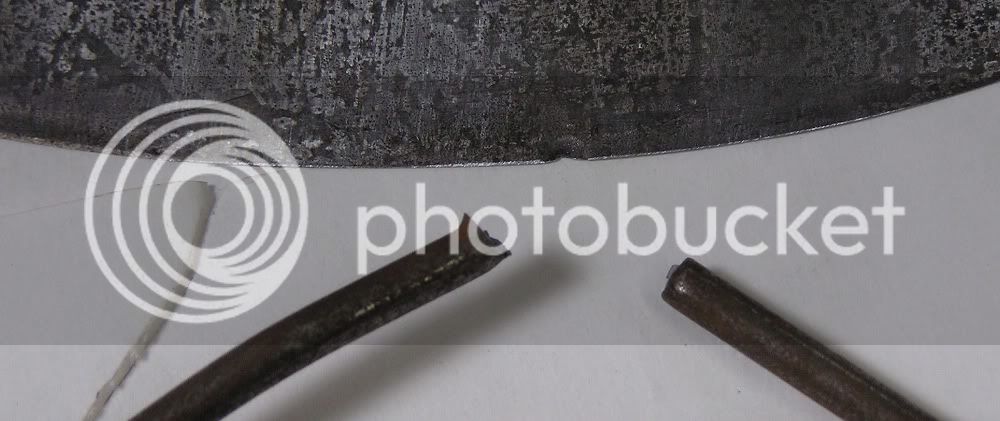Old Knfmkr said:
I just finished a hawk made from an old half ax of unknown steel.It turned out great using the oil and temper method as described by Wick and Anvil 1231. I called Stuart(anvil 1231)and did what he said. I have made many knives but this is the first hawk. Non magnetic is not hot enough and the metal needs to soak a bit to make sure it is heated evenly. I tempered at 425f for two hours.
Mike
Not quite.
Had you quenched in Brine it would have been more than hot enough and if all parts of the item being heated are none magnetic then it is hot enough to quench. The problem most have when trying to bring an item up to heat is with the heat source they are trying to do it with..
If it's with some kind of torch ,by the time they get one part up to heat it goes cold again when they try bringing to heat another part.
What happens then ,the item ends up with cold joints through out and why it breaks when dipped in the quenching media.
The 450 o for tempering a Hawk is about 200-250 o lower than ideal..
I know I too can read all the metallurgy books available to us ,but unless you have the latest electronic gizmo’s and atmospheric free heat sources , the books will not do you any good unless you have the means to confirm you are where you need to be at every step of the way..
Even though I am in agreement with Wick and friends , I am also adamant that if the gent looking for info for his Hawk has away to test his heating and for his known type steel, which I doubt that he does, then what I suggested for him and for anyone else in similar situation will get his job done and get it done quite well.
And all else is futal effort at something he can not prove,or diprove.
Just a thought for what it's worth.
Twice.






